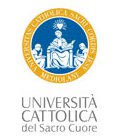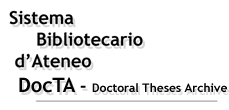|
|
DocTA - Doctoral Theses Archive >
Tesi di dottorato >
CORSO DI DOTTORATO IN SISTEMA AGRO-ALIMENTARE >
Citazione:
Utilizza queste indicazioni per citare o creare un link a questo documento.
|
Ouadhene, Mohamed Ali. "New insights on Aspergillus flavus population in maize crops to boost the application of biocontrol with atoxigenic strains in Europe", Università Cattolica del Sacro Cuore, XXXV ciclo, a.a. 2021/22, Piacenza, [http://hdl.handle.net/10280/146607].
|
| Titolo: | New insights on Aspergillus flavus population in maize crops to boost the application of biocontrol with atoxigenic strains in Europe |
| Autore/i: | OUADHENE, MOHAMED ALI |
| Tutor: | BATTILANI, PAOLA |
| Coordinatore: | AJMONE MARSAN, PAOLO |
| Lingua: | ENG |
| Abstract in italiano della tesi: | Le aflatossine sono micotossine prodotte da due specie di Aspergillus section Flavi, Aspergillus flavus e A. parasiticus. Aflatossina B1 è il prodotto naturale più tossico che si conosca. L’uso di ceppi atossigeni di A. flavus che per esclusione per competizione minimizzano la presenza dei ceppi tossigeni è la strategia riconosciuta a livello globale come più efficace per ridurre la contaminazione da aflatossine. Questo strumento di biocontrollo è stato sviluppato per la prima volta in USA, attualmente è disponibile anche in Africa e in sud Europa (ottenuto da studi Italiani, disponibile con l nome commerciale di AF-X1). Il progetto di ricerca ha lo scopo di studiare la sopravvivenza negli anni del ceppo di A. flavus che costituisce il principio attivo di AF-X1, attualmente autorizzato per la coltura del mais, ed eseguire la caratterizzazione genetica della popolazione fungina di A. flavus isolata da mais in Grecia, Spagna e Serbia per evidenziare la eventuale presenza di ceppi geneticamente affini a quello impiegato per Af-X1 |
| Abstract in inglese: | The use of atoxigenic strains of A.flavus has been demonstrated as an effective tool to consistently reduce aflatoxin content in different crops. AF-X1 is a commercial aflatoxin biocontrol product containing the non-aflatoxigenic (AF-) strain of Aspergillus flavus MUCL54911 (VCG IT006) endemic to Italy, as an active ingredient. PhD research project indicated that the use of AF-X1 has a residual effect that improves the structure of the A. flavus resident in both the treated fields and in the neighboring untreated fields, so that the AF- active ingredient is more common and the frequency of the aflatoxin producers is reduced; the application of AF-X1 promotes the creation of these safer Aspergillus populations, with no significant effects on the total fungal communities. Therefore, the analysis of A.flavus population from Greece, Spain and Serbia revealed high diversity within and among countries and dozens of haplotypes shared among countries. Linkage disequilibrium analysis indicated asexual reproduction and clonal evolution of A. flavus resident in Europe. Moreover, haplotypes closely related to MUCL54911 were found to belong to the same vegetative compatibility group (VCG) IT006, relatively common in all three countries. The results indicate that IT006 is endemic to southern Europe and should be utilized as an aflatoxin mitigation tool for maize across the region. Furthermore, the post-harvest efficacy trial did not give sound conclusion, Further studies are needed to gain more knowledge in the large-scale experiment by involving more farmers from different Italian maize growing areas |
| Data di discussione: | 5-giu-2023 |
| URI: | http://hdl.handle.net/10280/146607 |
| È visualizzato nelle collezioni: | CORSO DI DOTTORATO IN SISTEMA AGRO-ALIMENTARE
|
File in questo documento:
| File |
Dimensioni | Formato | Accessibilità |
|---|
| PhD Thesis Mohamed Ali Ouadhene.pdf | 2,45 MB | Adobe PDF | Visualizza/apri
|
|
Accesso e utilizzo dei contenuti di DocTA
|



